The Curious Case Of Betelgeuse
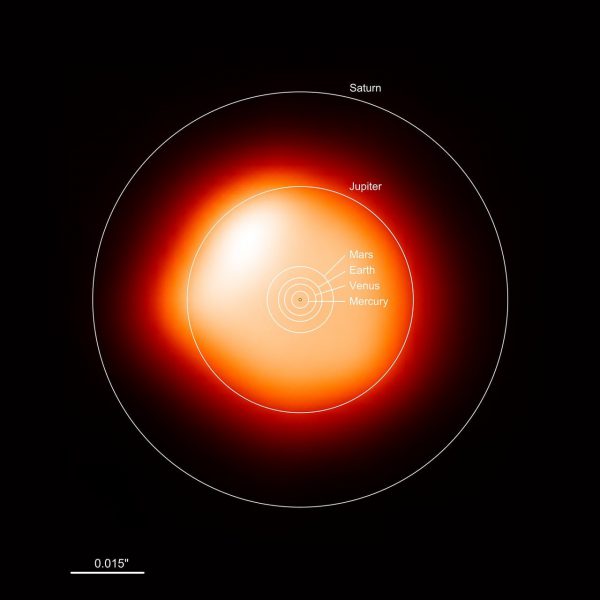
If you’ve looked at the Orion Constellation in the last six months, you might have noticed something strange. What’s happening is Betelgeuse (roughly translated from Arabic meaning “The armpit of Orion”) began to dim noticeably. By January, Betelgeuse’s brightness had dropped dramatically, by a factor of approximately 2.5. Going from magnitude 0.5 to 1.5, it became dimmer than the star Aldebaran in the nearby Taurus Constellation.
This dimming led to massive news coverage as Betelgeuse is a Red Supergiant star, in the final stage of its life — and it will soon die (astronomically speaking, “soon” is “next 100,000 years.”)
A supernova would be significant because we haven’t seen one in the Milky Way for over 400 years, but studies suggest that Spiral galaxies (such as the Milky Way) should generate roughly three supernovae per century. Betelgeuse is a mere 700 light-years away from Earth; that means its supernova will also be super bright, visible day and night, and lasting for months.
However. Betelgeuse is also well-known for being a semiregular variable star, and its varying brightness has been tracked for years by astronomers working with the American Association of Variable Star Observers (AAVSO). In the last few years, various academic papers have supported claims that Aboriginal Australians, including the Pitjantjatjara people of the lands around Ooldea, South Australia, included the discovery and variability of Betelgeuse in oral traditions passed down for generations for tens of thousands of years.
Thanks to the hard work of generations of astronomers, we know there are multiple cycles for Betelgeuse’s rising and falling in brightness so when the star reaches the dimmest point of all these cycles, it could look as exceptionally faint as it has recently.
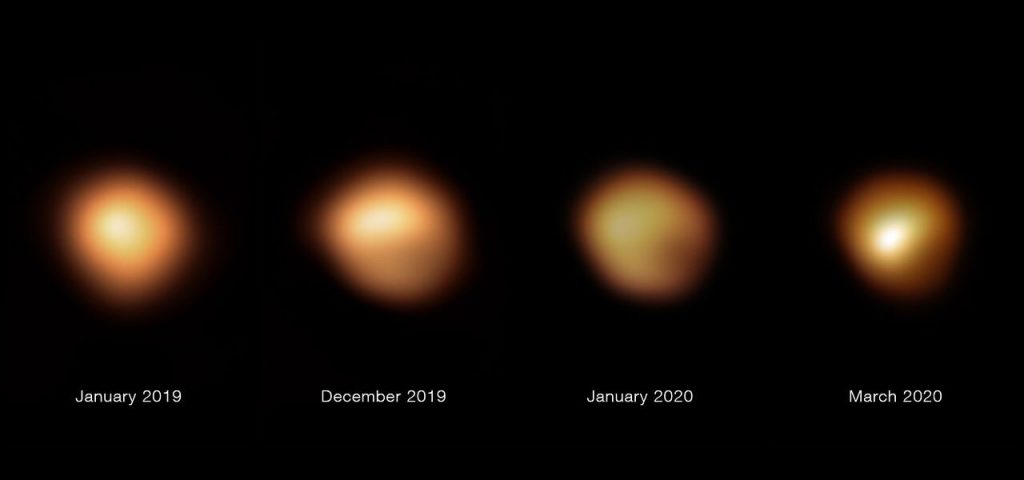
This famous variability is most likely the case now. We’ve recently seen Betelgeuse beginning to slowly brighten, dashing the hopes of many hoping for a massive explosion. Betelgeuse is an entirely different star from our Sun, with different fusion processes occurring.
Stars shine for so long due to a delicate balance between gravity and nuclear fusion in the star’s core like our Sun. The star’s gravity wants to crush the star into oblivion; without the nuclear fusion in the core where hydrogen turns into helium, gravity would crush a star into a white dwarf, neutron star, or a black hole, depending on the size of the star.
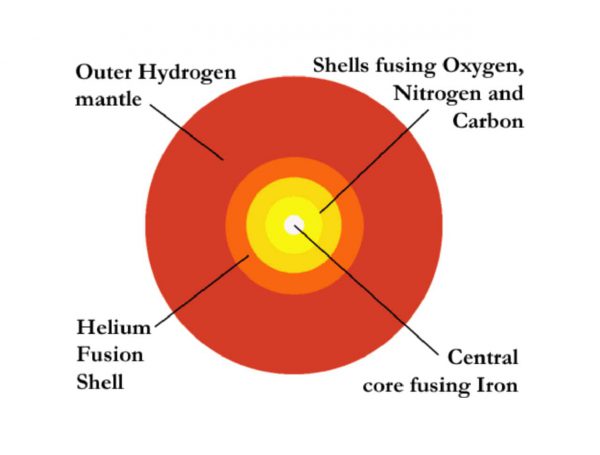
But this crushing pressure of gravity is also needed for nuclear fusion. The process is known as the proton-proton chain (pp chain) and combines four hydrogen nuclei into one helium nucleus. About 3% of the original mass gets converted to energy in the form of gamma rays. This conversion heats the core even further, pushing back against gravity.
Another fusion process occurs in stars more massive than the Sun, and it’s known as the Carbon-Nitrogen-Oxygen (CNO) cycle. It’s called this because the process fuses helium into those three elements, and this process is why those three elements are the most abundant in the universe, after hydrogen and helium.
Both fusion processes can occur at the same time within a star, and over time the CNO cycle increases as the star’s hydrogen are used to create helium, which becomes more abundant. Because of this, the CNO cycle releases more energy at a faster rate than the pp-chain, which causes the star’s temperature to rise. By the time the CNO cycle dominates, the star’s core is so hot that the outer layers of a star swell and expand.
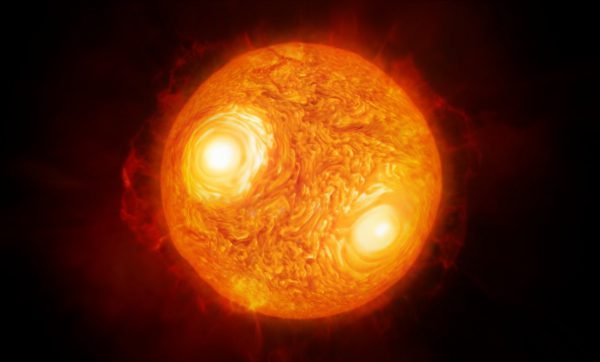
For millions of years, Betelgeuse was a main-sequence star about 20 times the size of the Sun. But it’s reached this stage; it’s frantically fusing helium, has ballooned into a red supergiant, and is running out of fuel. In the end, gravity always wins. Betelgeuse still has enough helium to stay in the Red Supergiant stage for about 100,000 years. When it does run out of helium, it will then move onto fusing carbon into heavier elements for around 1,00 years, but after this stage, this is where things speed up. When Betelgeuse runs out of carbon, it will over the next year fuse heavier and heavier elements until it tries to fuse Iron. Still, Iron cannot fuse into anything heavier because of the colossal amounts of energy and force required. Finally, at that point, Betelgeuse will become a supernova.
The dimming and brightening we are currently seeing suggest to Astronomers that Betelgeuse won’t be exploding in our lifetimes as it indicates that the core of Betelgeuse is still ticking along at a steady pace. The star’s changing brightness is due to the process of convection.
Let me explain. The upper layers of the star get heated by the core, generating a flow of hotter and colder regions in the star. The material in the interior is heated and rises to the surface. That material then cools and sinks into the star, and the cycle continues. Convection happens in the outer regions of most stars, including our Sun.
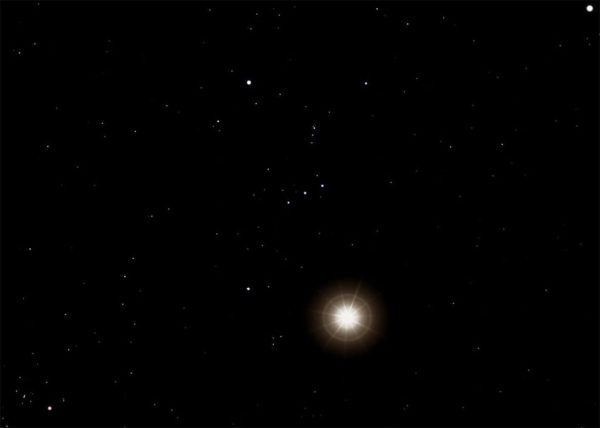
On the surface of our Sun, these convection regions are called granules, and they’re about the size of Texas. This comparison might sound huge, and it is on the human scale, but for our Sun, it’s smaller than most sunspots we’ve seen. So even though the Sun has bright hot regions and dimmer cool regions, it doesn’t affect the overall brightness of the Sun.
With Betelgeuse, its outer layers are much less dense than our Sun’s. The layers are so thin that its outer layers are even less dense than Earth’s atmosphere, akin to a thin soup of glowing gas. This enables the convection regions on Betelgeuse to be huge. A single region can cover a large fragment of the star, and when one of those regions rises to the top, Betelgeuse gets brighter, and when it cools the star dims. Betelgeuse is starting to brighten because hot material from near the core is rising to its surface.
While it’s sad Betelgeuse won’t blow up in our lifetime, it’s great to see the publicity, and this is an astronomical event that you don’t need a telescope or binoculars to see. My love of astronomy started when my Dad took me outside our house in 1995 when I was 9 to watch Space Shuttle Columbia fly over Northam; I also hope the kids seeing these events are inspired to learn about astronomy.





